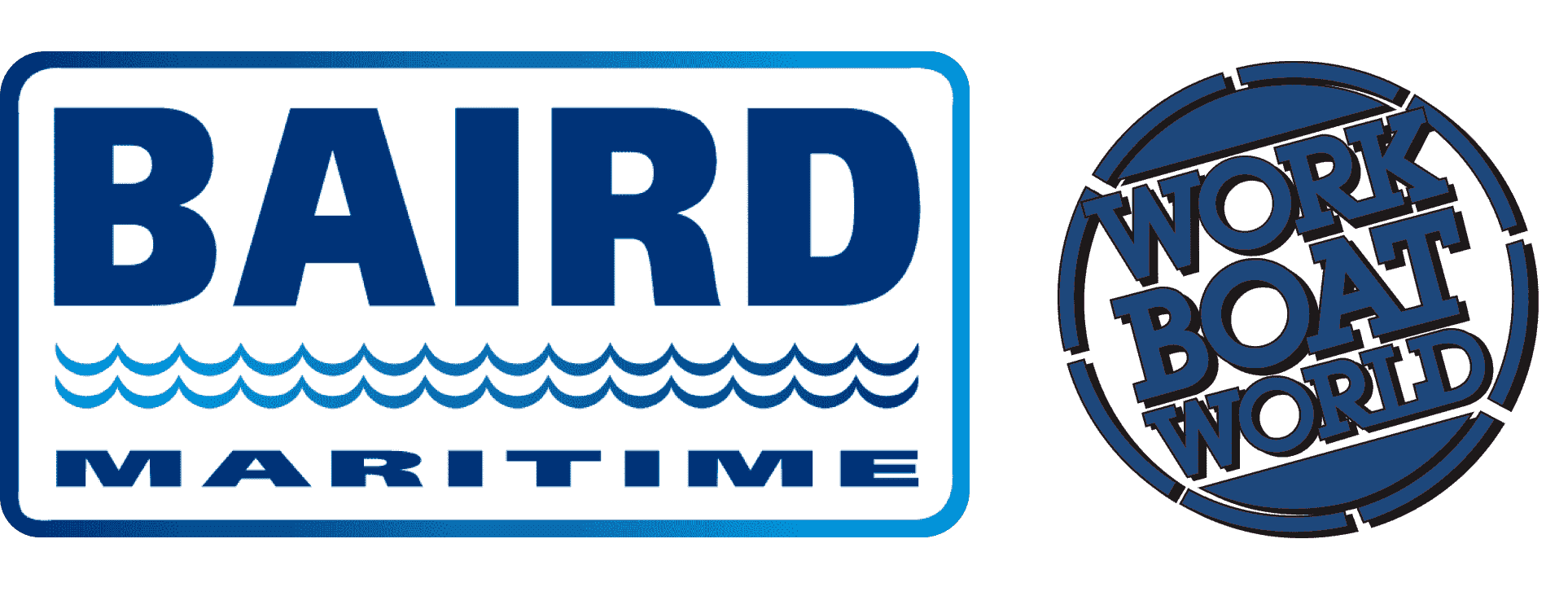VESSEL REVIEW | Olympic Boreas – Hybrid walk-to-work vessel boasts enhanced manoeuvring and DP capability
Norwegian shipbuilder Ulstein Verft has handed over a new commissioning service operation vessel (CSOV) to offshore services provider Olympic Subsea. Olympic Boreas is the first in a series of two CSOVs being built for Olympic Subsea with design work undertaken by Ulstein Design and Solutions.
Innovative hull delivering stability and manoeuvrability
The newbuild has a length of 89.6 metres (294 feet), a beam of 19.2 metres (63 feet), a maximum draught of 5.9 metres (19 feet), a total open deck area of 440 square metres (4,700 square feet), a warehouse area of 500 square metres (5,400 square feet), and 91 cabins that can house 126 personnel. The vessel is notable for having a hybrid diesel-electric propulsion system with variable speed generators and large batteries as well as Ulstein's proprietary twin-stern hull design with main propellers located fore and aft.
“The vessel has a hybrid battery propulsion setup and is prepared for methanol fuel to enable low-carbon emissions,” Helge Torvik, Project Manager at Ulstein Verft, told Baird Maritime. “Also, this is not the first Ulstein vessel with a twin-stern design, but the first one with such a design to be delivered.”
The batteries also have a shore power connection, enabling the CSOV to charge its batteries emission-free while in port. To operate the system's many power modes, an advanced mode operation system is implemented to support green operation of the vessel. The machinery spaces have also been configured to ensure low noise levels in the crew accommodation spaces.
The twin-stern solution has a characteristic hull shape that reduces resistance and motions and allows for the installation of four main thrusters – two aft and two forward. Torvik said that with this innovative setup, the vessel is exceptionally swift and can perform walk-to-work operations in an efficient manner. This also has a significant impact on fuel consumption in dynamic positioning operations.
“A new bridge design has been meticulously developed for this vessel through a close collaboration between the ship owner and Ulstein Design and Solutions,” added Torvik. “Additionally, all cabins are carefully designed to feature natural daylight, with select cabins even offering private balconies.”
The CSOV also features Ulstein Power and Control’s hybrid power solution, which incorporates a substantial battery system and diesel generators that can operate at variable speeds as well as fixed speeds. This design ensures optimal fuel utilisation. There is also reserved space for extra battery capacity, allowing full-electric operations for up to 18 hours a day once the necessary infrastructure becomes available.
Full deck equipment suite promoting greater safety
“The owner had a focus on developing a vessel that is user-friendly and fuel-efficient in addition to holding a high-quality standard,” said Torvik. “Comfort and operability were prioritised, and much of the focus has been on the accommodation. In addition to the cabins, there are two game rooms, a cinema, a gym, a library, a relaxation room, lounges, a spacious mess, and several meeting rooms.”
Torvik added that the owner also approved of the twin-stern design, saying it is a smart concept and optimised for low energy consumption. The unique dual stern design with main propeller units at each end ensures smoother motions, higher comfort, and increased operability, making it ideal for complex marine operations in support of the offshore energy industry.
“During operation, the offshore wind service vessels stay positioned at the turbines most of the time,” said Torvik. “With the main propellers installed fore and aft, these vessels will reduce the energy requirement significantly when in DP mode.”
A newly designed bridge features a sleek, modern aesthetic. In Torvik’s view, it combines form and function to create an ideal working environment for the crew.
“Carefully engineered to enhance efficiency and comfort, the layout caters specifically to DP operators and gangway or crane operators,” Torvik told Baird Maritime. “This innovative design ensures seamless operations, offering clear visibility, intuitive controls, and an ergonomically optimised workspace to support the crew’s needs under all conditions.”
“One of the main challenges in designing the vessel was in having to match the owner’s specific requirements while staying within their budget,” added Åsmund Eide, Lead Naval Architect at Ulstein Design and Solutions. “Additionally, we had to balance preparing the vessel for future methanol fuel and full electric use with ensuring it could be effectively utilised from day one.”
“Building such prototypes requires ample collaboration between many stakeholders,” Torvik remarked. “As we have experience in building state-of-the-art, advanced offshore vessels, there was a smooth construction period with great collaboration with the owner as well as with all our key partners.”
For Eide, feedback from the owner, the class and the yard, as well as observations during production and upon completion of the vessel, provide valuable insights. These lessons help in the improvement of vessel designs and processes for future projects.
As with Ulstein’s other SOV designs, Olympic Boreas boasts advanced motion compensation and walk-to-work systems, facilitating easy transfers between the vessel and offshore structures.
“The deck equipment includes an Ampelmann W-type gangway with integrated tower and elevator,” added Eide. “It is height-adjustable from 15 to 30 metres horizontal above sea level. There is also a Motus five-tonne, 3D-compensated crane.
Construction of Olympic Boreas’ hull took place at the facilities of Polish shipbuilder Crist. Final outfitting was undertaken at Ulstein Verft in Norway. Olympic Notos, the second CSOV in the same series, was recently launched into the water for the first time.


